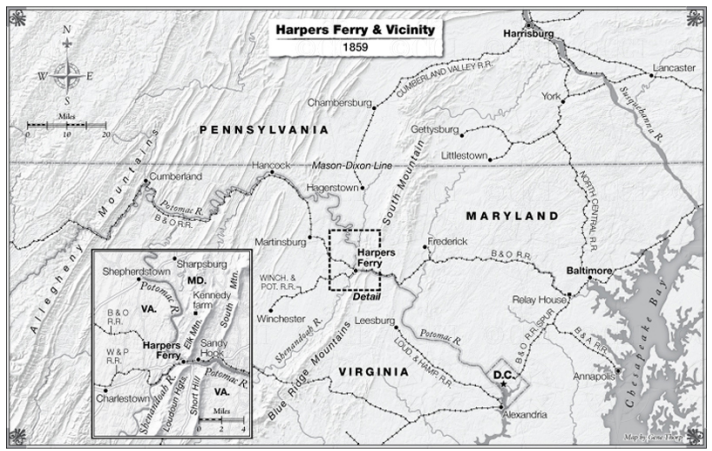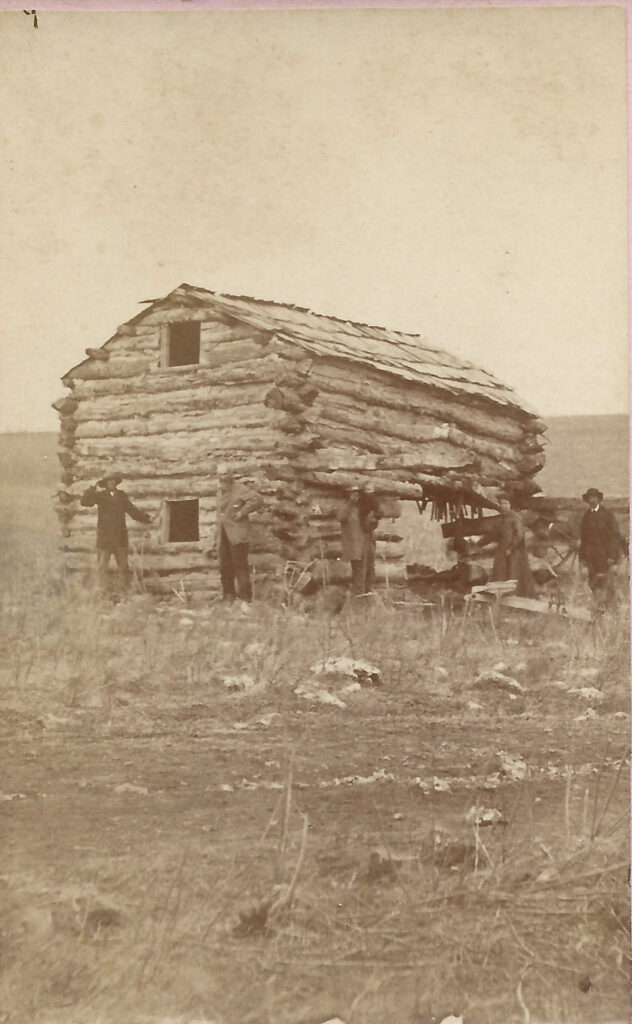Section #19 - Regional violence ends in Kansas as a “Free State” Constitution banning all black residents passes
Chapter 217: John Brown Recruits His First Ten Troops For His Virginia Raid
Summer 1857
Brown Returns To His Base In Iowa After Gaining Support From His “Secret Six”

Just as the bloodshed in Kansas is subsiding at the end of 1856, “Captain” John Brown is moving ahead with his shocking plan to capture the armory at Harpers Ferry and lead a slave rebellion in Virginia.
His trip east in January 1857 to gain financial and moral support has yielded valuable connections to members of the Massachusetts State Kansas Committee, the Boston Transcendentalists and to his most consistent supporters, the cabal known as the Secret Six: the Unitarian ministers, Thomas Higginson and Francis Parker, Franklin Sanborn, Dr. Samuel Howe, and the two moneymen, George Stearns and Gerrit Smith.
In addition, he has signed up an ex-British soldier of fortune, Hugh Forbes, to train up his prospective marauders in guerrilla warfare. He promises to pay Forbes $600 over the next six months for his efforts, a sum he will be unable to deliver as events play out.
In April 1857, Brown heads back west, through Cleveland in May, Chicago in June, and on August 7 to his home base in the southwest town of Tabor, Iowa, an abolitionist stronghold and station on the Underground Railroad.
His first priority in Tabor is a meeting with Hugh Forbes, who arrives on August 9, and is appalled to find that the “army” he was hired to train consists of exactly two recruits, Brown and his son, Owen. On top of that, the two men have different visions about the military strategy that lies ahead.
Brown favors a mixed white and black band of 25-50 men who will swoop down on the arsenal at Harpers Ferry, and hold the site until the arms can be transported back to his Allegheny Mountain retreat. At which time, he expects some 250 or so run-away slaves to materialize, take up the guns and pikes, and then carry out a series of Nat Turner-like attacks on the local plantations.
Forbes believes that the arsenal can be stormed, but is highly skeptical about what happens next. He doubts that slaves will bolt their plantations and, even if they do, whether they will be sufficiently inclined and prepared to use the weapons and successfully attack their masters, who will fight to defend their homes.
After further discussions, Forbes heads back east to the proposed training camp in Ashtubula, Ohio, while Brown departs for Kansas on November 5, 1857, to search for volunteers.
November – December 1857
Ten Volunteers Head Out To Ohio For Military Training
The recruiting trip to his prior haunts in Kansas proves moderately successful, yielding nine new volunteers in a four-week period.
One is John Henry Kagi, who becomes second-in-command in Brown’s “Provisional Army.” Kagi is of Swiss descent and has been a school teacher in Ohio before moving to Nebraska City, passing the bar, and setting up a site on the Underground Railroad. He is soon in the thick of the warfare in Kansas, joining a militia unit and fighting at Ft. Titus. He is captured and jailed in Lecompton, then wounded in a daring escape. He is twenty-two years old when he meets John Brown and signs up for the raid on Harpers Ferry.
The captain of Kagi’s militia unit is twenty-six year old Aaron Stevens, whose formal military training began at age sixteen when he fought in the Mexican War. He too joins Brown and will serve as his tactical advisor.

Three other Kansas volunteers will stay with Brown all the way to the raid. They are William Leeman, John Cook, and Charles Tidd.
Among this group, Kagi and Leeman will be killed at the arsenal, Stevens and Cook will be captured and hanged, while Tidd will fight and escape along with Owen Brown.
Four others sign on but drop out over time: Richard Realf, Luke Parsons, Charles Moffett, and the lone black man at the start, Richard Richardson, a run-away slave from Missouri.
None of these men – not even Brown’s son Owen – share his Puritan religious zeal and determinism, but they are all dedicated to ending slavery, which is what bonds them going forward.
On December 4, 1857, they pack up their supply wagons and head out east, hoping to reach Ashtabula, Ohio, for training under Hugh Forbes. But, after a 280 mile trek, the winter weather bogs them down, and they are forced to settle into winter quarters in the town of Springdale, Iowa.